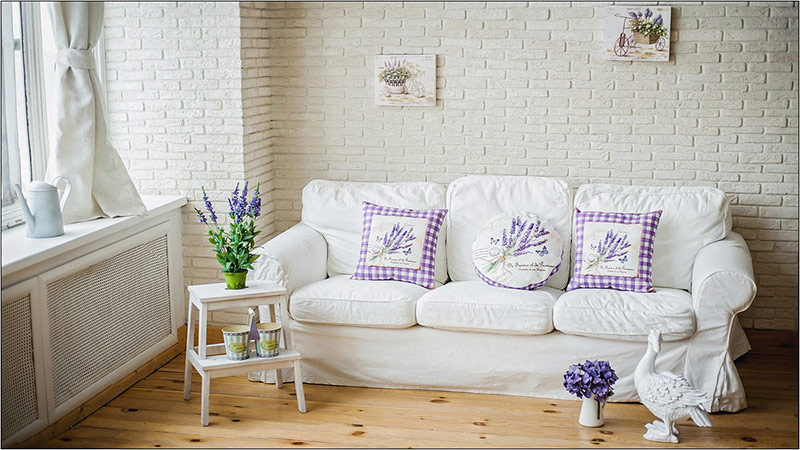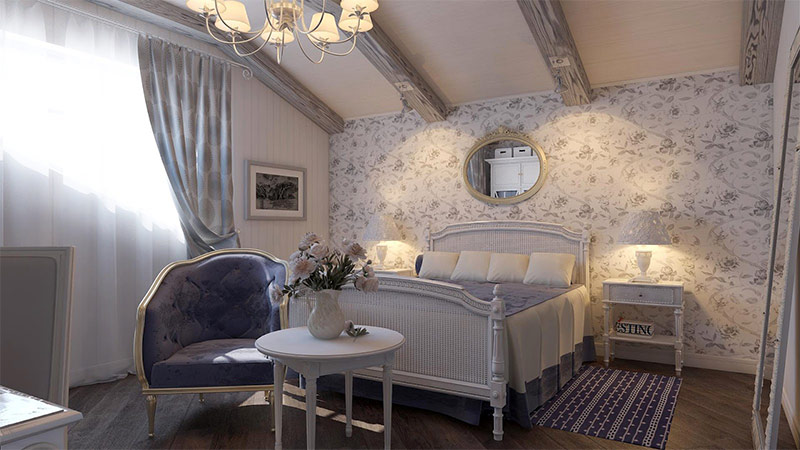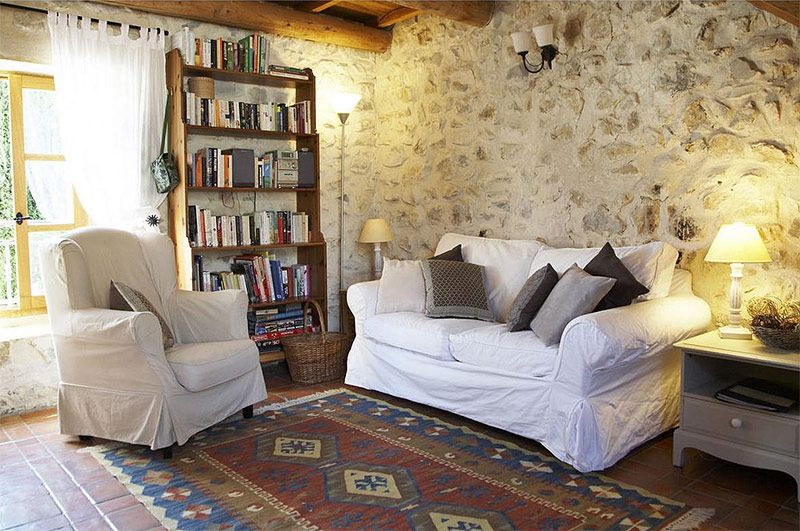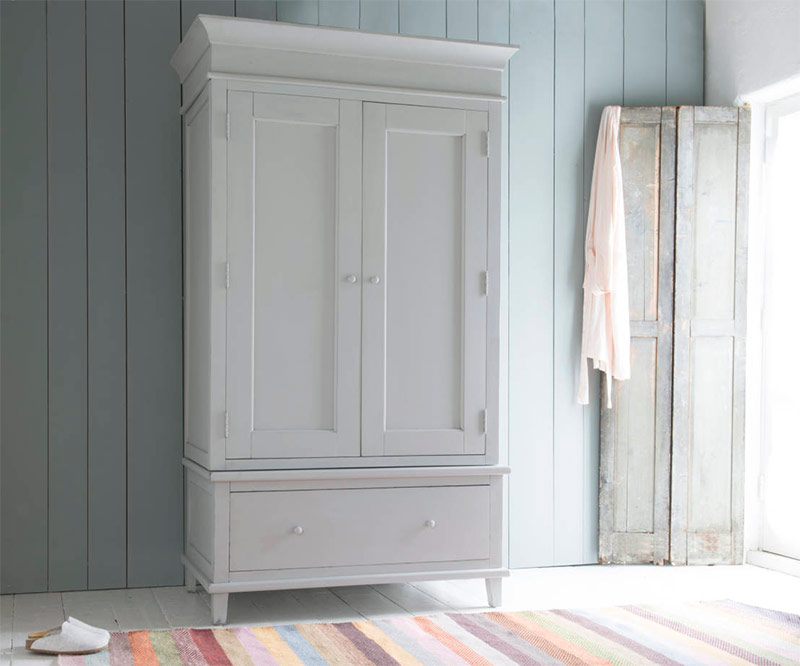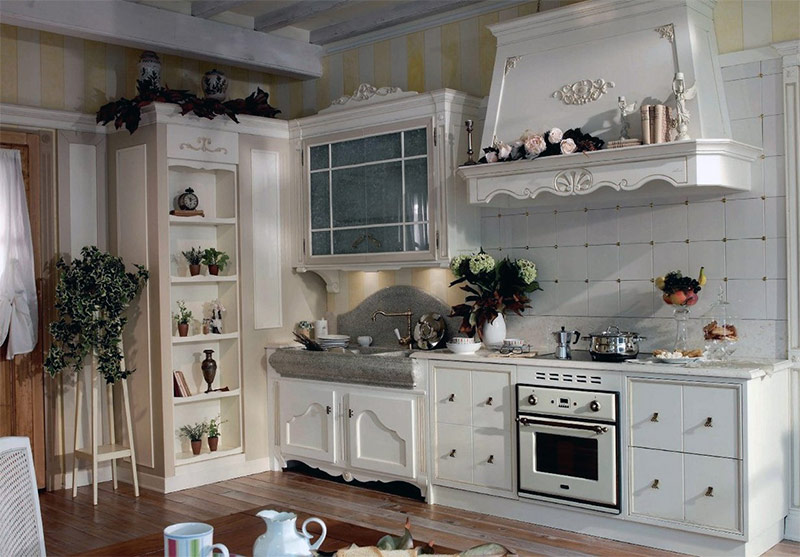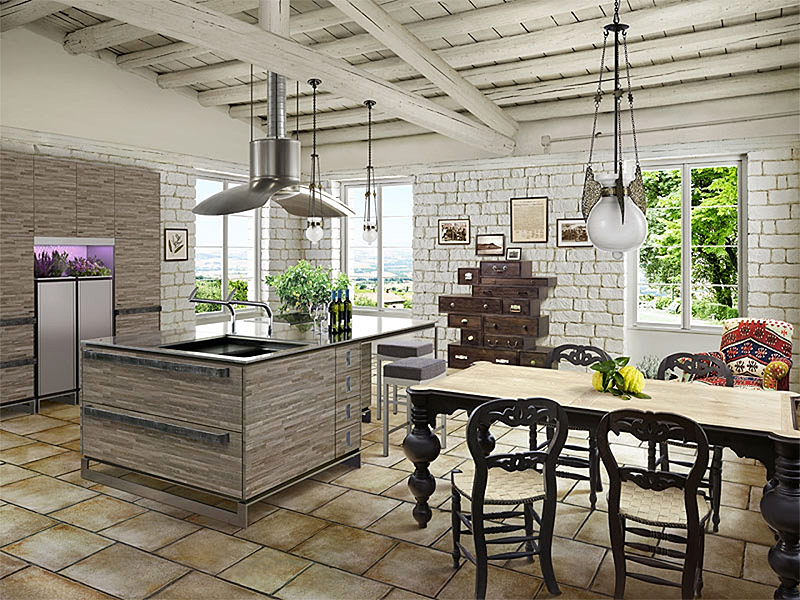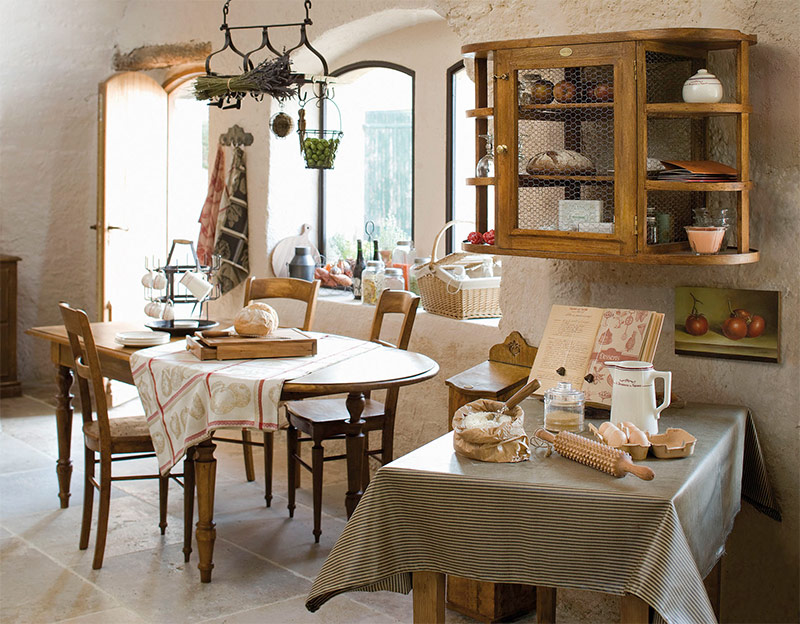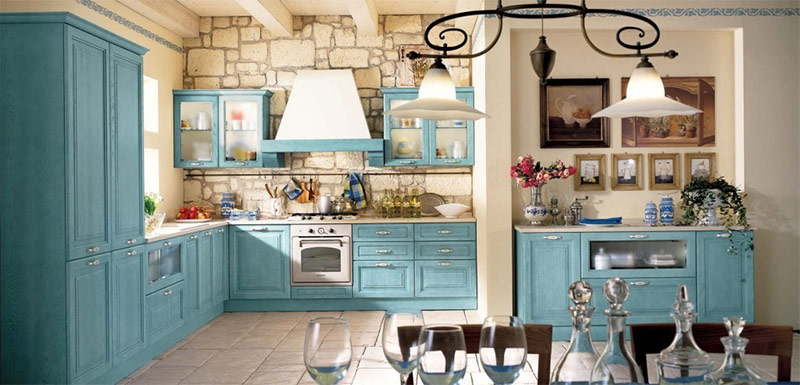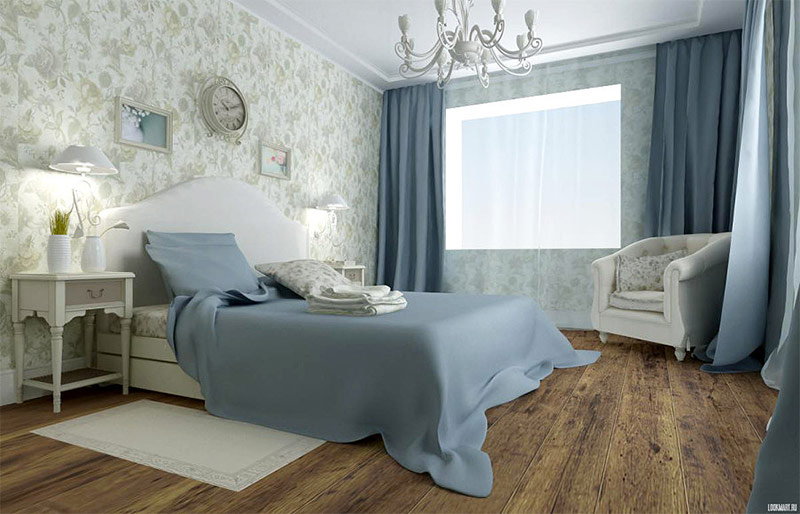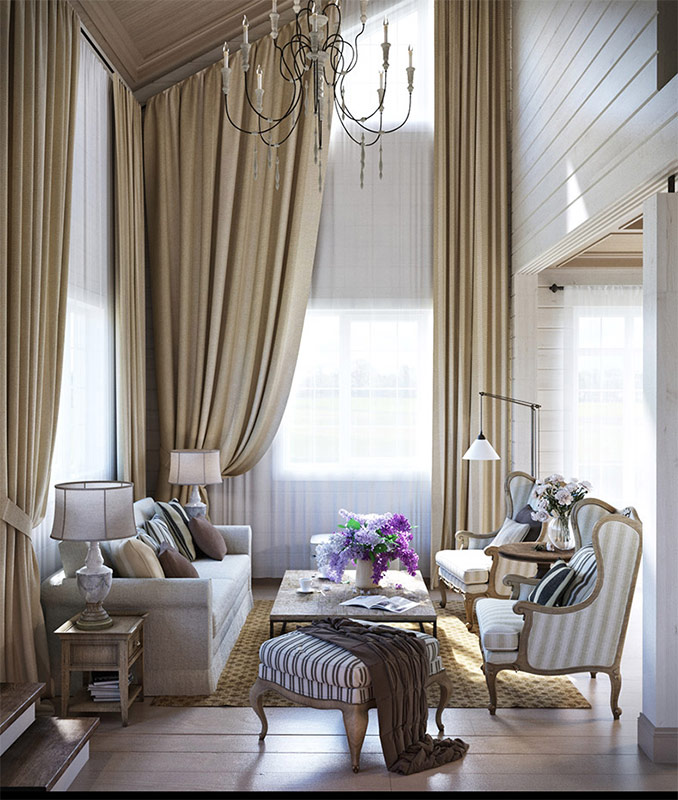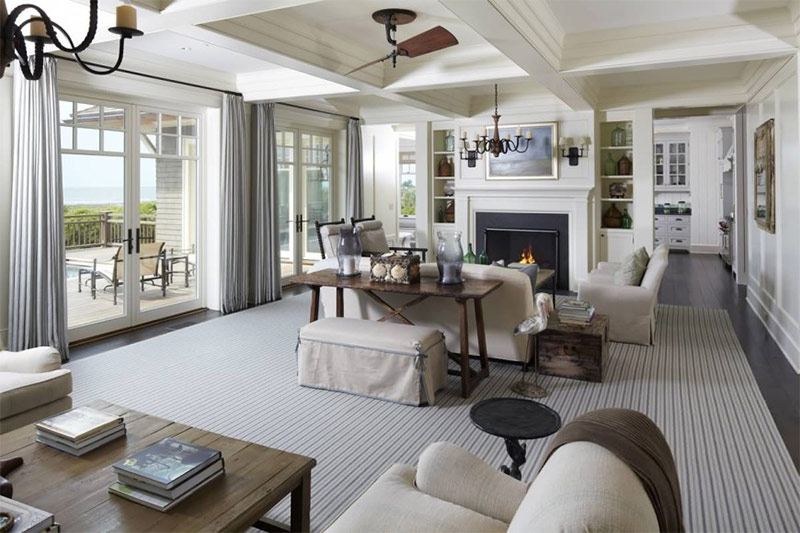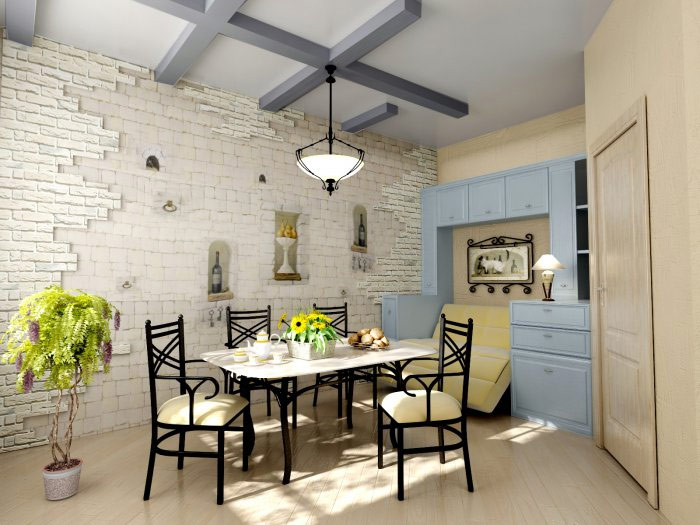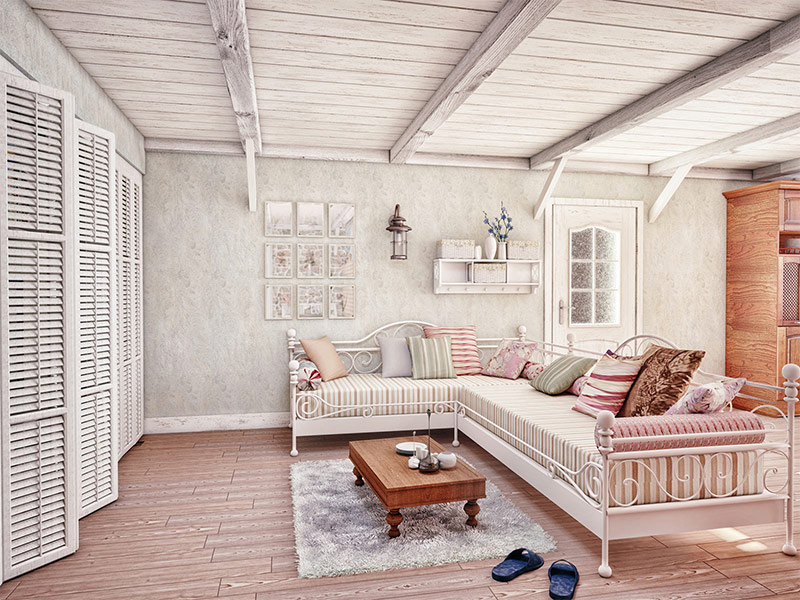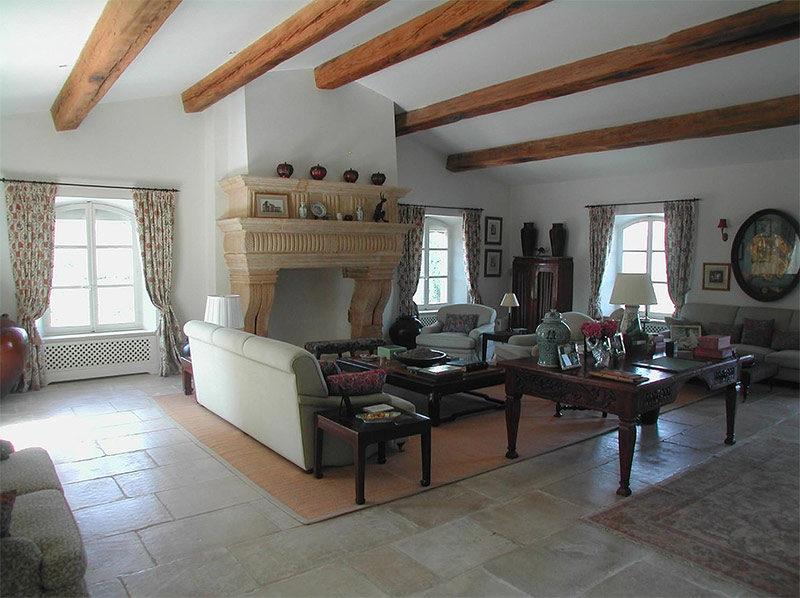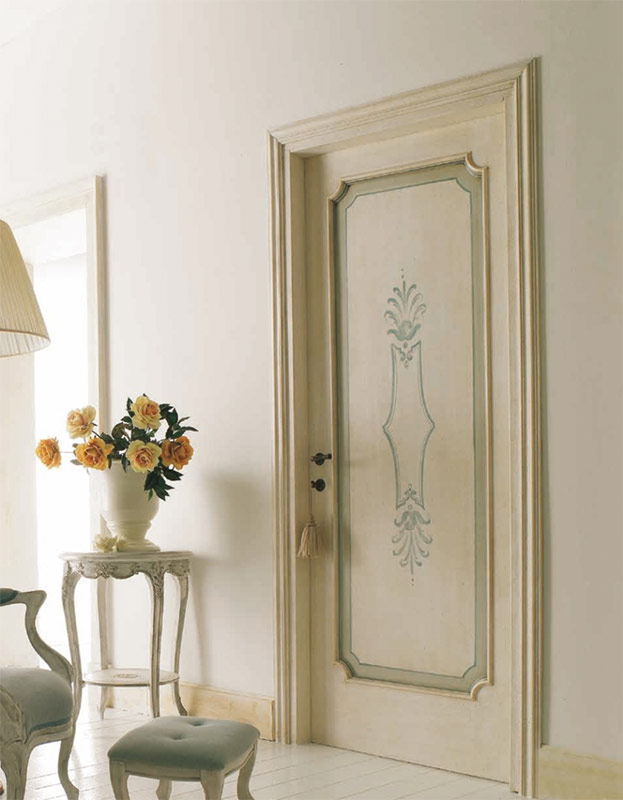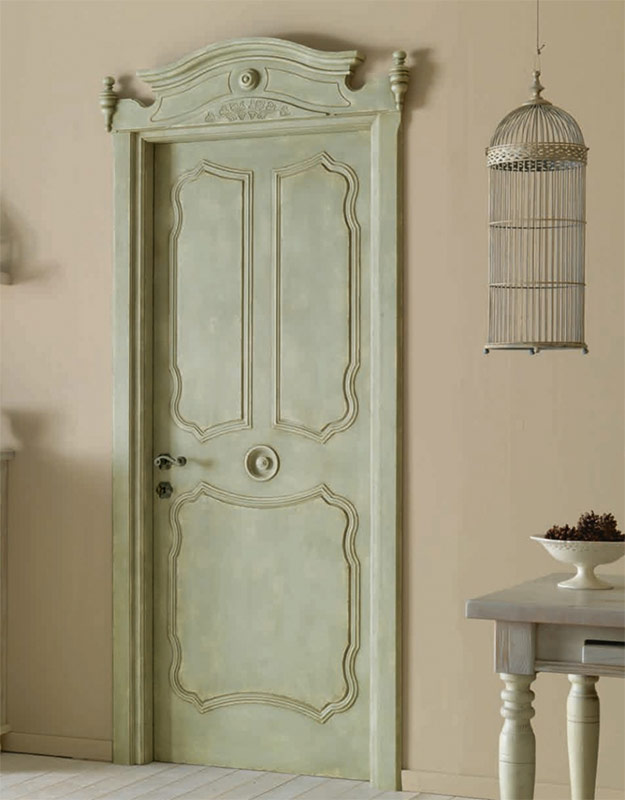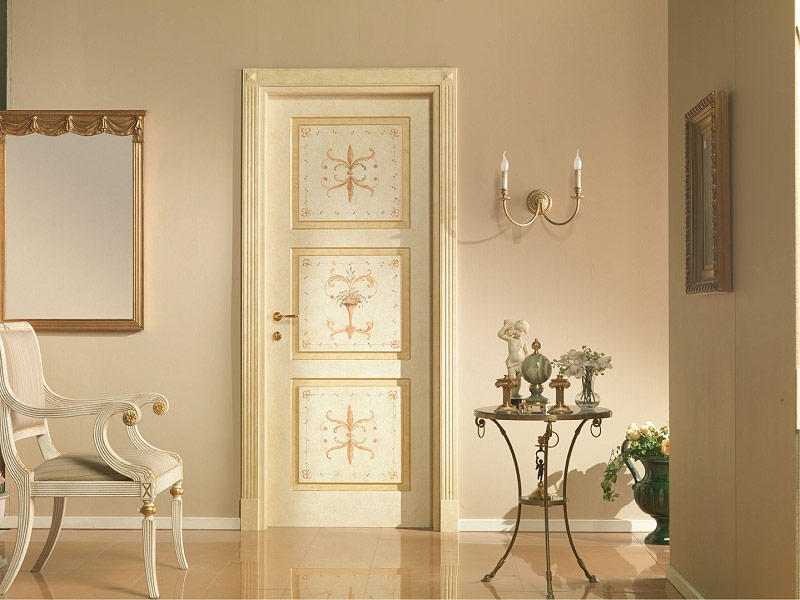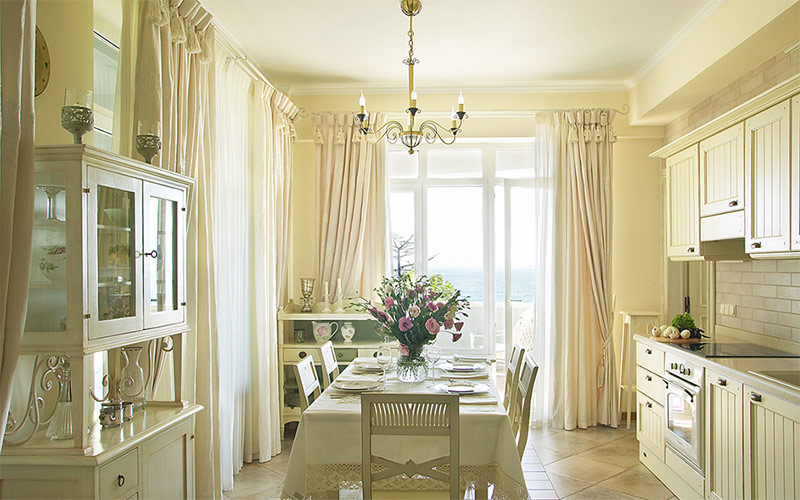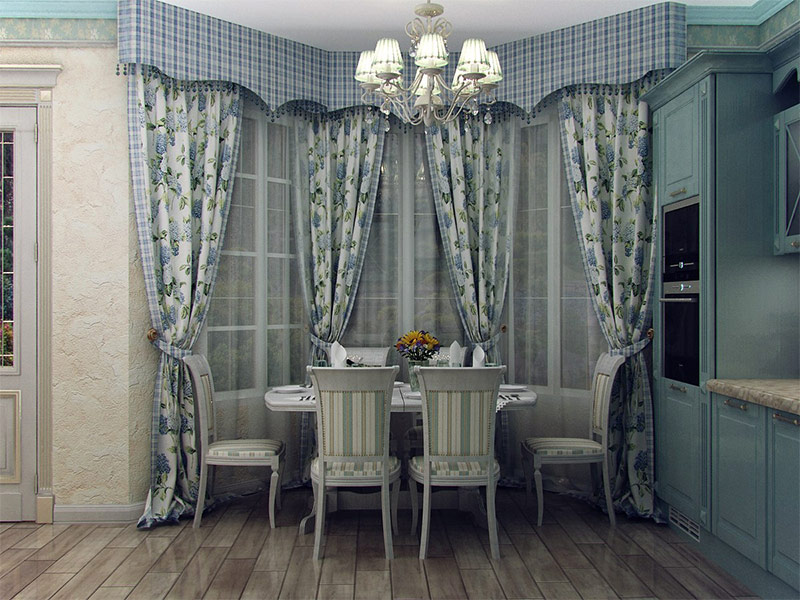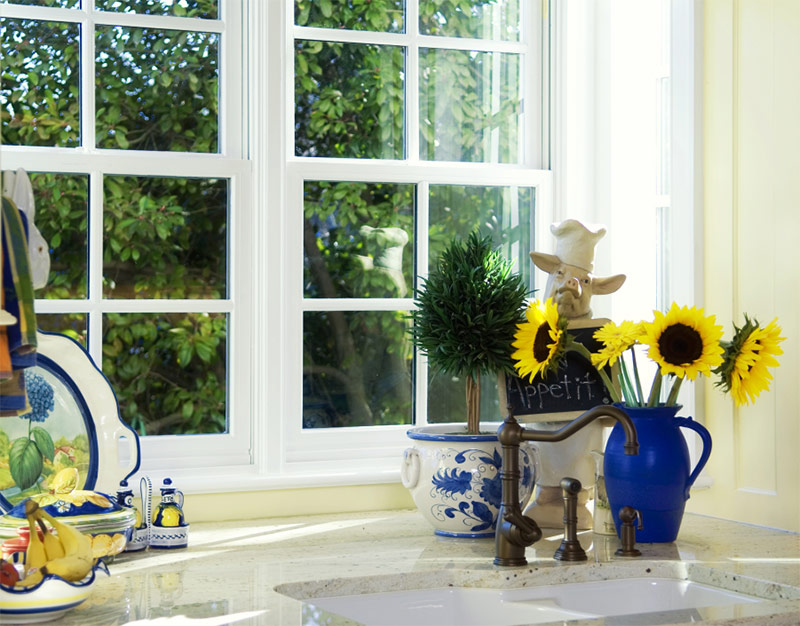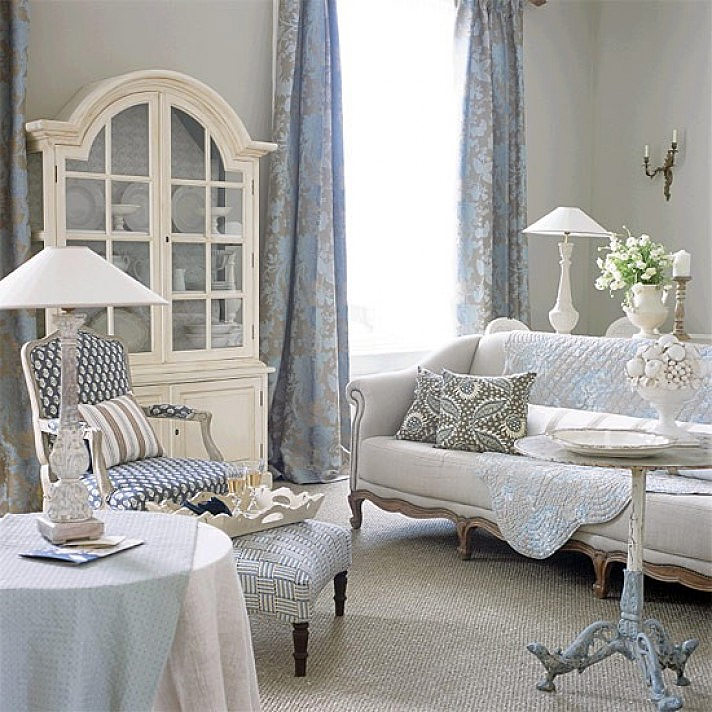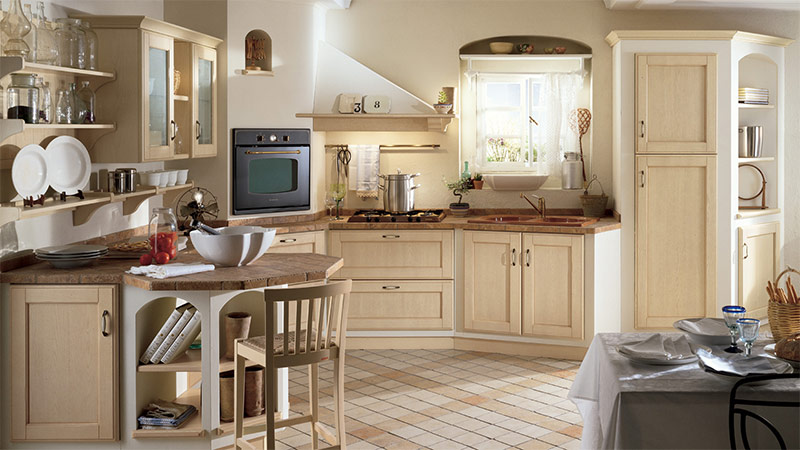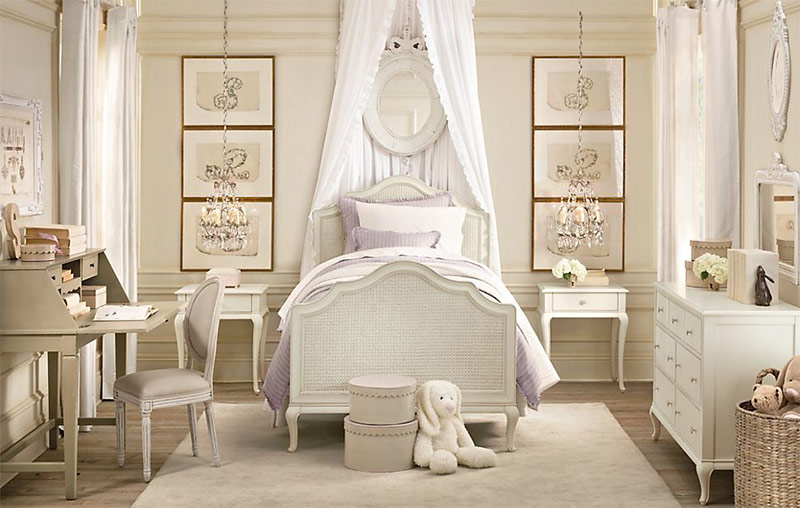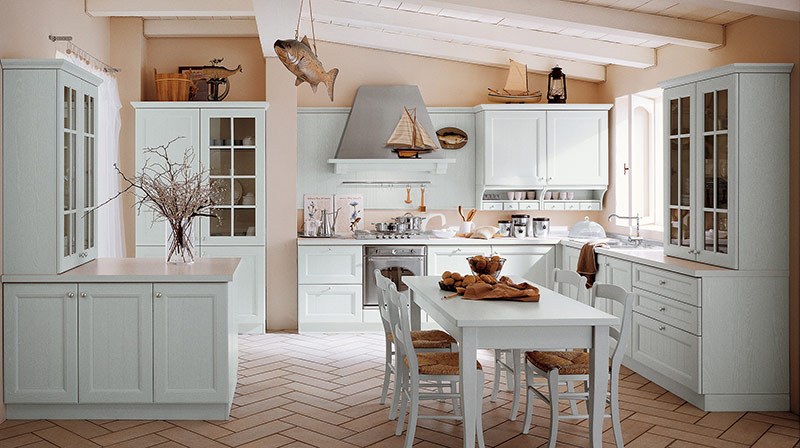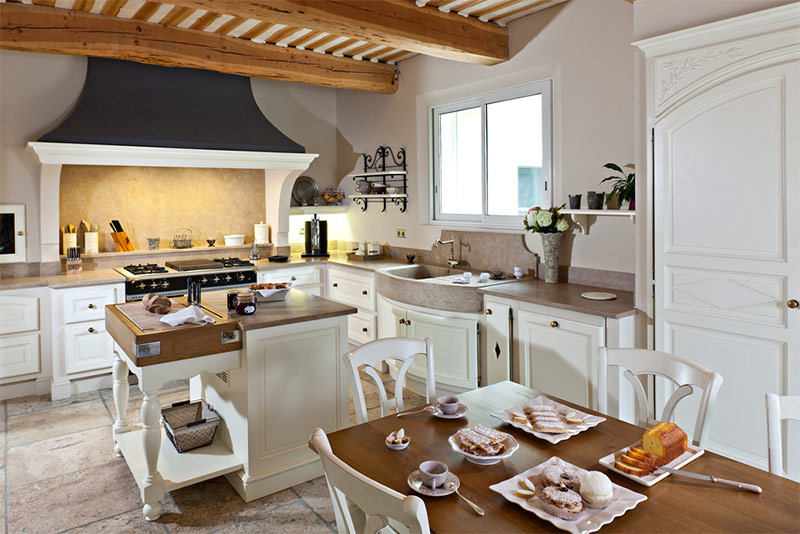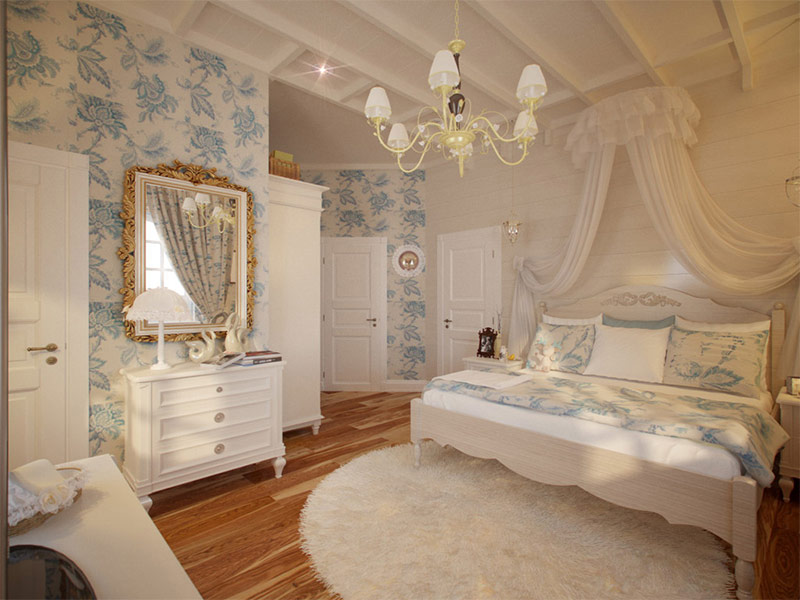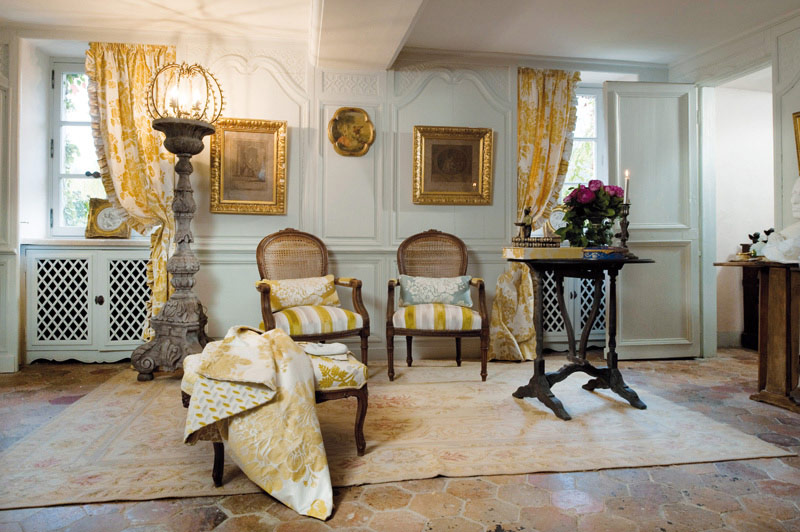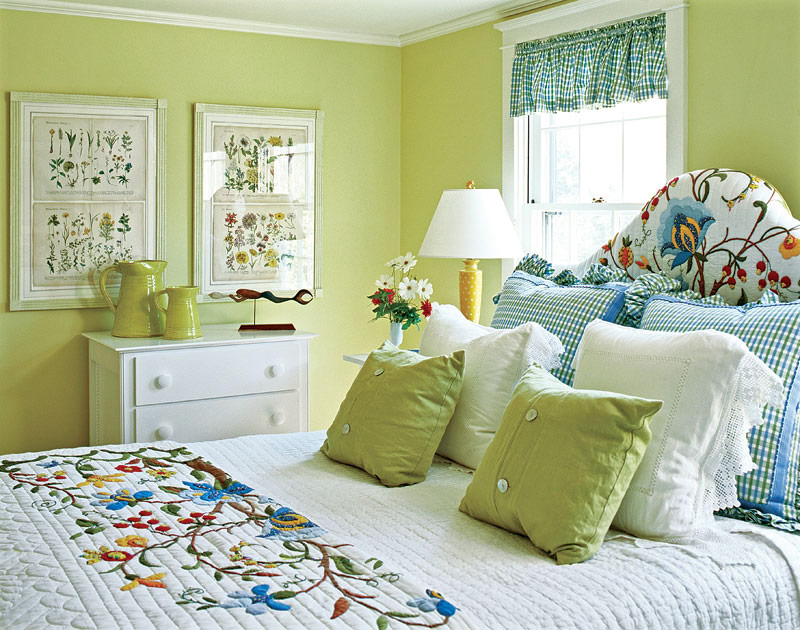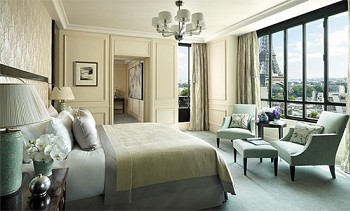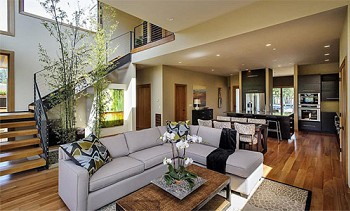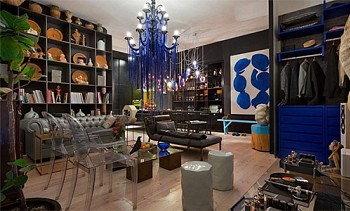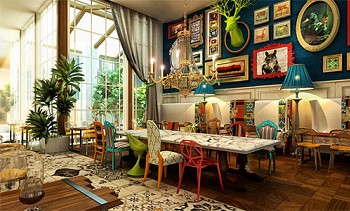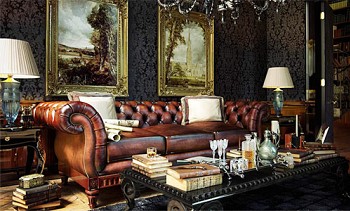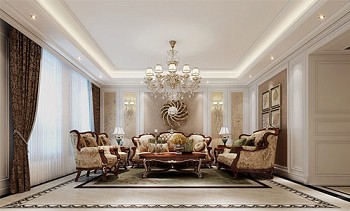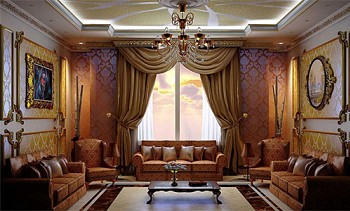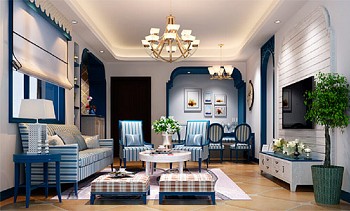Provence, or the “French country”, as it is also called, is not just a style in interior design, but a unique opportunity to plunge into the atmosphere of peace and comfort, feel the lightness and closeness of nature, fill life with peace and harmony. The Provence style in the interior is very popular today: it is chosen by people who are tired of ostentatious luxury, who want to bring the romantic atmosphere of rural life into the interior, and simply sophisticated natures.
At first glance, it might seem that this style is not suitable for the interiors of modern city apartments, but this is not so. It is able to bring light, warmth, pleasant natural shades and inspiring silence, which is so lacking for residents of big cities.
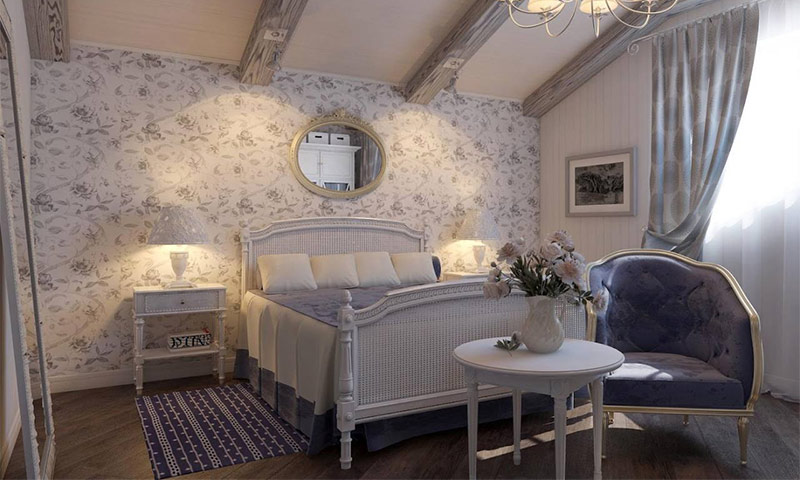
Content:
A bit from the history of the origin of the style
Provencal style was named after the region in southeastern France, where it began its history. Representatives of the French bourgeoisie in the 17th century began to build their houses in the provinces more and more often. In an attempt to get away from the bustle of the city and strict classics, people inspired by the freshness of rural life and the picturesque surrounding landscapes began to decorate their homes simply, but with characteristic French elegance. The simplicity, naturalness, charm of the old world - all this is reflected in the atmosphere of French country.
The Provence style began to grow rapidly, especially among bohemians - artists and writers. In the 19th century, the new style became widespread throughout Europe.
And nowadays, the interiors of apartments and houses in the Provence style attract the attention of many people, thanks to the comfort created by them, the special energy and atmosphere, which are conducive to a relaxing break from everyday fuss.
Country Style Differences and Provence
What are the characteristic features of provence that make it possible to accurately recognize this style and not mix it up with any other?
Undoubtedly, all village styles have much in common, but Provence has its own nuances:
- when designing the interior, bright colors are never used - they are mostly pastel, muted;
- the walls here are usually whitewashed, decorated with paintings or flowers;
- the interior, decorated in the Provence style, has a lot of bright fabrics with floral ornaments, no other ethnic style has such an abundance of “flowering” textiles;
- the used forged elements are thin and very elegant, which, in general, is not characteristic of either the Scandinavian style or the American country;
- French country style houses are characterized by a certain minimalism, and even a kind of “coldness”: in the Provence region it is quite sunny and hot, as a result of which they try to create an environment conducive to artificial cooling in the rooms (for example, the walls here are usually white with average amount of decor);
- in olive areas, large windows are usually installed in dwellings, which, due to differences in climatic conditions, are rarely found in other country styles.
Of course, not all of the above can be realized in the conditions of our modern apartments, but the main thing is not to follow all the nuances exactly, but to create the necessary associations. And what are the main associations associated with this style? Summer, sea, sun, flowering meadows, the smell of grass, the smell of spices and dried plants. And to create such an atmosphere, it is not necessary to strictly follow all the rules, you just need to put all the warmth of your soul into the process.
Provence-style walls, floor and ceiling
Walls
The most frequently used wall decoration in interiors designed in the Provence style is plastering, and the plaster is applied roughly, with bulges and irregularities, with brickwork peering through it. Provence-style interiors use textured stucco.
Another popular type of wall decoration is their sheathing with boards, followed by painting. Here, the difference with other country styles is clearly visible: for example, in Russian country they try to preserve the color and texture of wood, and in French, as a rule, boards are painted white.
To decorate the walls of the kitchen, glazed brick, artificial or natural stone, as well as tile are used.
Floors
The most popular flooring in French country is wood planks and tile (usually with beveled corners, terracotta or light brown). In provincial houses, you can find both painted and unprocessed plank floors. Laminate, parquet, carpet and linoleum are certainly not suitable for Provencal style apartments.
The ceilings
Ceilings are usually painted with light shades. Often use decorative ceiling beams - usually contrasting dark colors or, conversely, whitened.
Doors
For rooms decorated in Provence style, you must choose white doors. However, you can buy ordinary wooden doors, paint them with white paint and artificially age the surface. White doors are often decorated with floral paintings.
Window
For interiors in the Provence style, French windows from the floor are ideal (original windows and doors). But since this is almost impossible in our apartments, you can install windows with multi-section frames instead of classic French windows. The color of the frames, as a rule, is also white.
Simple, stylish furniture
Furniture in French country teeters on a border that separates elegance and functionality. Although it is largely free from embellishment, which historically has been a hallmark of French design, it can be generally called elegant. And although for rural residents, especially in the past, the main thing was that each piece of furniture clearly fulfill the functions assigned to it, it was not uncommon to have multifunctional pieces or elements of furniture that could easily be moved to where they are currently most needed.
Stay away from overly monotonous furniture sets. Instead, “mix” wooden pieces of furniture with various surface finishes and metal, which give the interior a touch of antiquity.

The seating area in this photo represents the French country’s approach to furniture. Upholstered chairs with armrests, a table and shelves merge in a sophisticated harmony, connected by a common color scheme of pale white and bluish-gray shades. These pieces of furniture have decorative curls, which raises them above strict practicality, but their similar elegance in no way can be called deliberately ostentatious or exaggerated.
Flowers
The desire to erase the boundaries between internal and external is the basis of life in rural France (in fact, throughout the country). Not a single French country-style interior is complete without flowers, whether they are placed in a ceramic vase, painted on linen or carved on a wooden frame in a mirror.
Fresh flowers and leaves should look as if they had “come” from a garden located right outside the door - at ease and naturally. Choose flowers that grow in those places where this style was born - sunflowers, irises, poppies.

Those who gather at this table will surely feel at home at ease and very comfortable. A vase of flowers is the undoubted star of this scene. Other elements of the interior (a vase of fruit, a picture on the wall, a jug decorated with a rooster) reinforce the general impression, the feeling of country life.
Warm colors
Whether they are bright, deep or pastel, the colors of the interior design in the style of the French country are soft and tender and give comfort. White here is always warm, it is rather not even white, but shades of ivory, cream or pale beige. Other colors are borrowed directly from the surrounding landscape - sunny yellow, sky blue, brick red, as well as the color of peonies, sage and lavender.

In fact, the palette of this kitchen, combined with the dining area, includes three primary colors - cream yellow, rich red and slightly muted bright blue. Since the dominant colors are used only in the form of small strokes, they do not violate the ease of space.
Not just accents
Accessories used in interior design in the style of Provence are very rarely purely decorative. They usually carry a subtext of usefulness: wall plates, which, if necessary, can be put on the dining table, baskets, with which you can bring crops from the garden, pots and jugs, which can also be used for their intended purpose. An open shelving is a natural choice from this point of view - household items are given an honorable place, but they are not hidden behind cabinet doors.

The overall candelabra on this table not only instantly attracts the attention of anyone who has crossed the threshold of the room, but can also serve a very specific purpose. Once upon a time, candles were the main source of light for residents of rural France. Despite the abundance of overly intricate decorative elements on this candelabrum, its potential functionality eliminates the feeling of excessive pathos.
The attractiveness of French country is to a large extent connected with the presence of “loose” bizarre accents in this style. And what in France could be more symbolic than the Gallic rooster? In this case, the task is to limit yourself: the market is so oversaturated with all kinds of trinkets of a cock theme that it is easy to fall into madness and ultimately turn your house into Old MacDonald’s farm from a folk English song than into the image of old France. Practice the art of restraint: get one or two items depicting a rooster, for example, a kitchen rug, a jar of cookies or a picture.

Despite the statuette crowing on the island table, in this kitchen the cock elements are kept in check. The three-dimensional image on the hood merges with the background, and you will not notice it until you look closely. The image of the farm scene on a hand-painted apron above the stove complements this bird theme, but in a more subtle, refined form.
Many faces
Like furniture, fabrics in French country create a sophisticated, attractive potpourri. The quintessence for this style is a veil, but do not neglect other materials, checkered and striped, floral and plain. Textured fabrics such as linen and mattresses, as well as the famous French tapestries give the room a tactile interest.
Whisper of time
In a style that reflects longevity and tradition, new furniture and accessories will seem somewhat alien. Provence requires a little rust and dust. Objects should look as if they have served a person faithfully for many years. Give up shiny metal in favor of wrought iron, bronze or tin, fine if there are dents and other traces of frequent use on metal objects. It doesn’t matter if there are slightly worn bedspreads or pillows with scuff marks in the house.
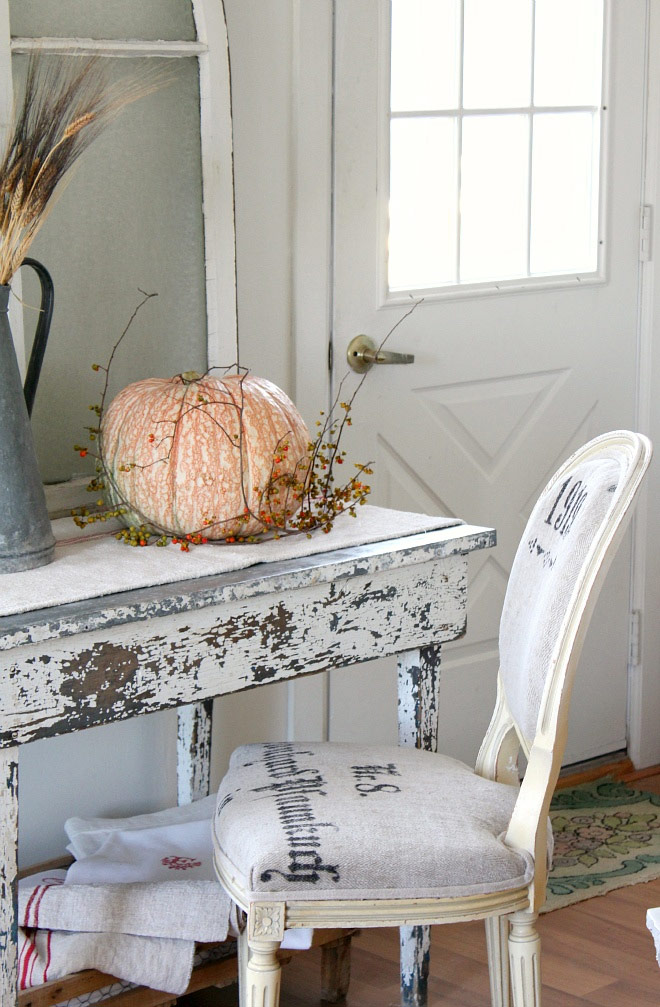
This cozy room looks as if each item in it has its own story - it is like the most stylish of all possible collections of used things. Even on new items, the presence of age-old dust is felt. Against the background of faded fabric colors, shabby wood legs look great.
Texture surfaces
There is no place for stainless steel or a perfectly smooth tile. Surfaces in French country require visual depth and proudly “bear” their imperfections.Cover the walls throughout the house with stucco, gypsum, stone (or a combination of all three materials). If you decide to paint the walls, consider using a glaze - a paint that mimics expensive plaster - or other methods of processing in which the surface of the wall will not look perfectly even. For floors from this point of view, the best options are flooring made of slate or limestone, ceramic tiles, as well as natural wood.

The hood in this kitchen is covered with tiny mosaics, which makes the surface visually coarser, which is typical for provence in the interior. The sensation created is enhanced by the voluminous elements of the kitchen apron.


